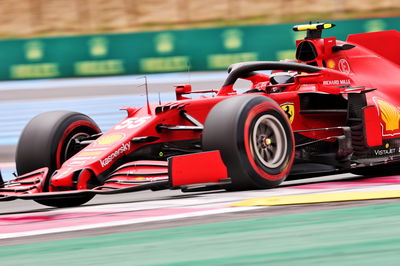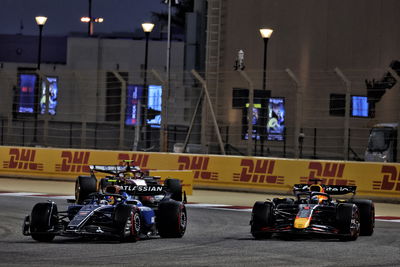Sainz reveals Ferrari has launched “big investigation” into F1 tyre struggles

After seeing both of its cars qualify inside the top eight at the Circuit Paul Ricard, Sainz and Charles Leclerc plummeted out of the top ten after suffering heavy tyre wear and graining during the race.
Ferrari’s non-score in France meant it surrendered third in the constructors’ championship to McLaren, now trailing it by 16 points.
Speaking ahead of this weekend’s Styrian Grand Prix in Austria, the Spaniard confirmed Ferrari has a plan in place to try and rectify its issues.
“Well it’s been only three full days since we had the issue and obviously as you can imagine as a team we were quite surprised by it, but in some way we also kind of knew we were exposed to this sort of degradation in the front tyres for a while now,” Sainz said.
“It’s quite interesting to see how such a big factory, such a big organization launches its plan to recover and to try and find out how we are going to try and tackle and solve this issue. I’ve been quite involved in all the meetings and all the discussions to see how we can get it better. I’ve spent the last three days in Maranello and we’ve definitely put together a plan for the short, medium and long-term to try and see if we can get it better.”
Looking ahead to the rest of the season, Sainz believes Ferrari will only experience similar tyre troubles at tracks that are front-limited - where the front tyres start sliding before the rears.
“Statistically the most front-limited circuits, which obviously Pirelli and ourselves have our simulations tools which say which circuits are more front-limited and which circuits are rear-limited. So we know going into France it was a very front-limited circuit and we might struggle,” Sainz added.
“On Friday it was actually pretty warm, the track was in decent condition, and we didn’t see any indications that the front was going to be any limitation, but suddenly on Sunday with the track condition change it was a very big issue. I agree with Mattia that it’s not like in three days we’re going to solve the problem, so we’re going to be exposed to conditions and to track changes, but we can do something to start learning.
“I think what we lack at the moment is to experiment, and we need to experiment with different set-up directions, different configurations that we can put in the car to at least in the short-term mitigate the problem, and then there’s already very big investigations being launched in the medium and long-term to try and solve the issue back at the factory.”












